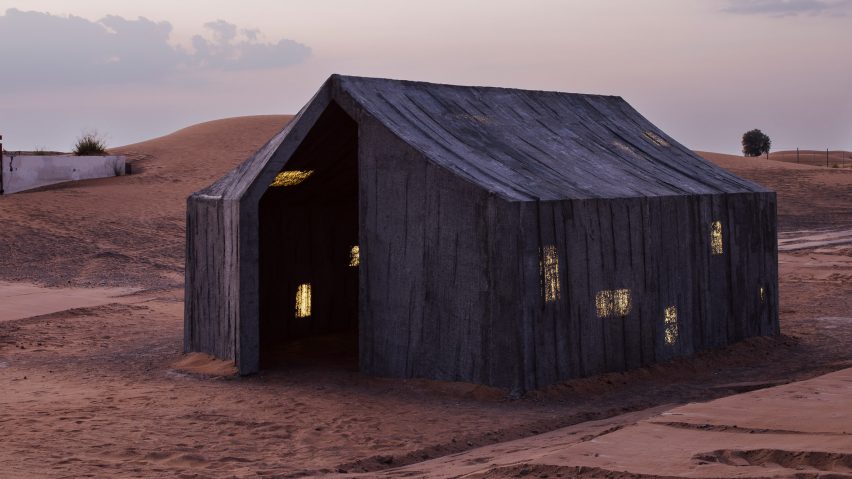
Twelve "very obviously" architectural installations at the Sharjah Architecture Triennial
The second Sharjah Architecture Triennial focused on architecture created from scarcity. Here are 12 intriguing pavilions and installations from the event.
Titled The Beauty of Impermanence: An Architecture of Adaptability, the triennial featured 29 contributors who largely focused on strategies of reuse and reappropriation driven by scarcity in the Global South.
It was curated by Nigerian architect Tosin Oshinowo, who explained the event's theme in a recent interview with Dezeen.
To clearly explore the topics of scarcity, Oshinowo aimed to make the event as accessible as possible by commissioning numerous, full-scale works of architecture.
"Only architects read text," she told Dezeen. "There's no project here that is pinned up drawings – we have quite a few installations, we do have some films, but we also have built projects and built projects that are about experience."
"We wanted to very obviously include architecture and very obviously include architecture that is about experimentation," she continued.
Read on for 12 key installations at the Sharjah Architecture Triennial:
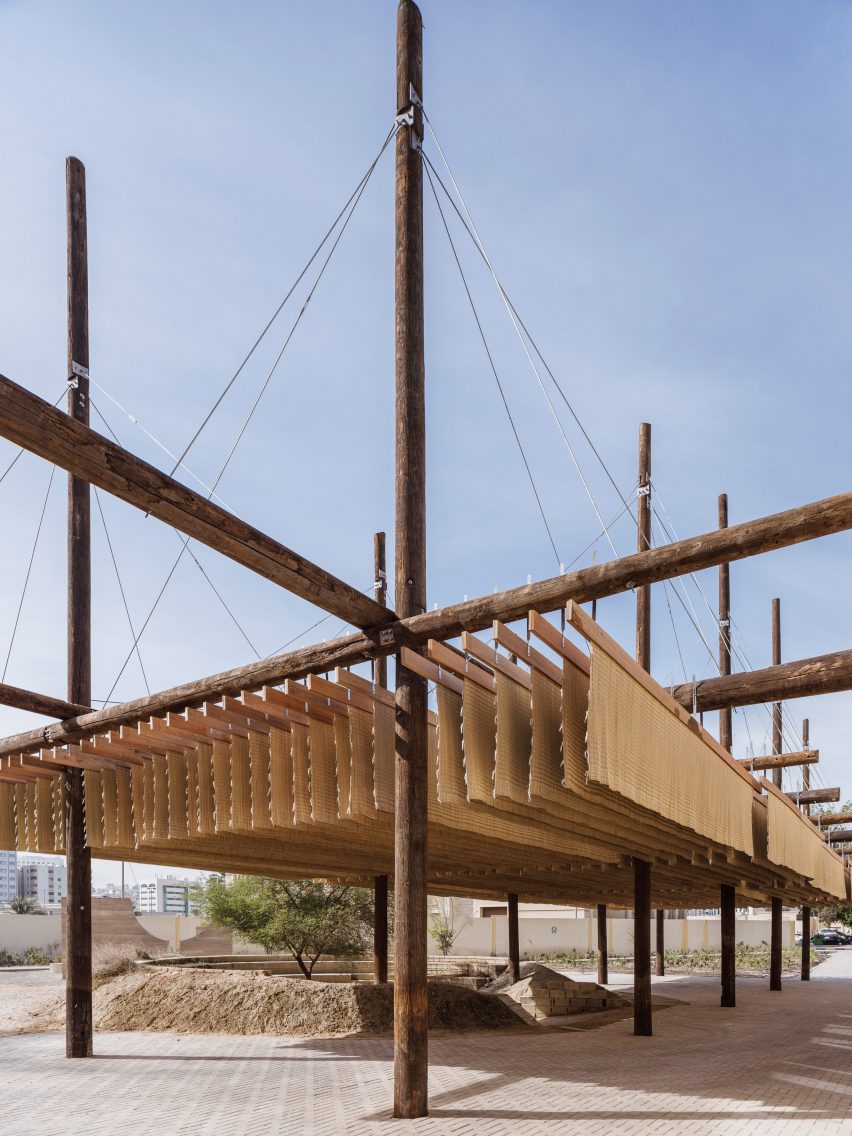
Raw Threshold by Al Borde
The Raw Threshold canopy provides shelter and shade for the restaurant inside Al Qasimia School, one of the Sharjah Architecture Triennial's main venues.
Ecuadorian architecture studio Al Borde created the structure from former telegraph poles, which have been removed and replaced with metal posts in much of Sharjah, as it wanted to use found materials and timber is not widely available in the UAE.
The canopy is located on the same site as Cooking Section's installation at the previous triennial, which now forms a mini amphitheatre.
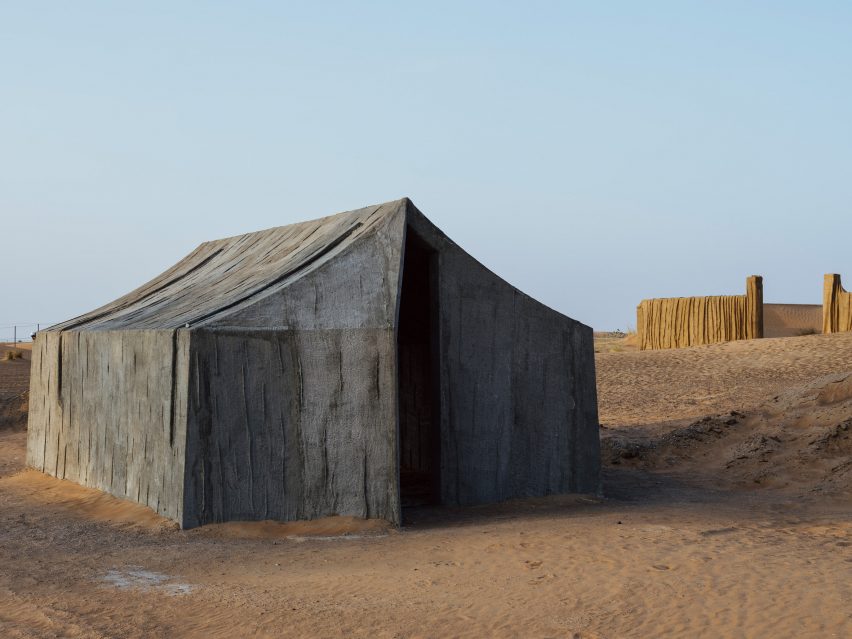
Concrete Tent by DAAR (Sandi Hilal and Alessandro Petti)
At the centre of the abandoned 1970s Al Madam Village in the desert to the east of Sharjah, Palestinian and Swedish studio DAAR, which won the Golden Lion at this year's Venice Architecture Biennale, has installed the latest version of its tent installation.
The concrete version of a tent aims to draw attention to the paradox of permanent temporariness.
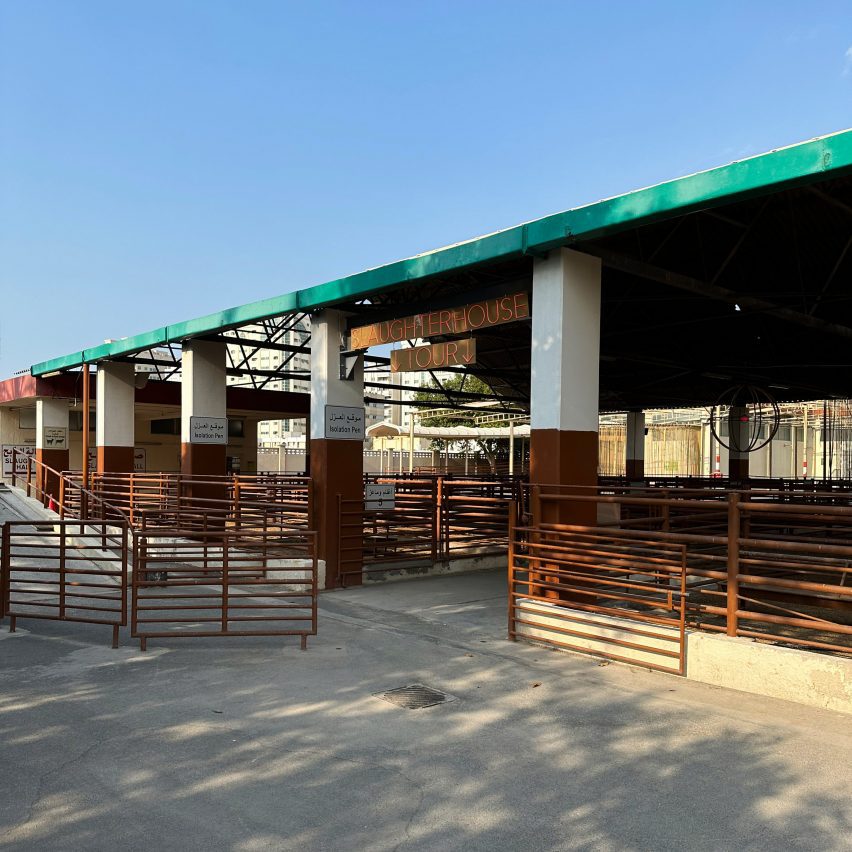
Anthropocene Museum 9.0 – Sharjah's Old Slaughter-house Tour by Cave Bureau
Kenyan studio Cave Bureau has converted a still-functioning slaughterhouse into the ninth edition of its Anthropocene Museum.
Visitors to the museum travel the route that animals take – first entering the pens then travelling up a ramp into the slaughterhouse and processing rooms.
"We have welcomed artists and creatives to be in the museum, so you will be walking through a working slaughterhouse but also a museum," Cave Bureau co-founder Kabage Karanja told Dezeen. "It highlights consumerism. We are products of consumerism."
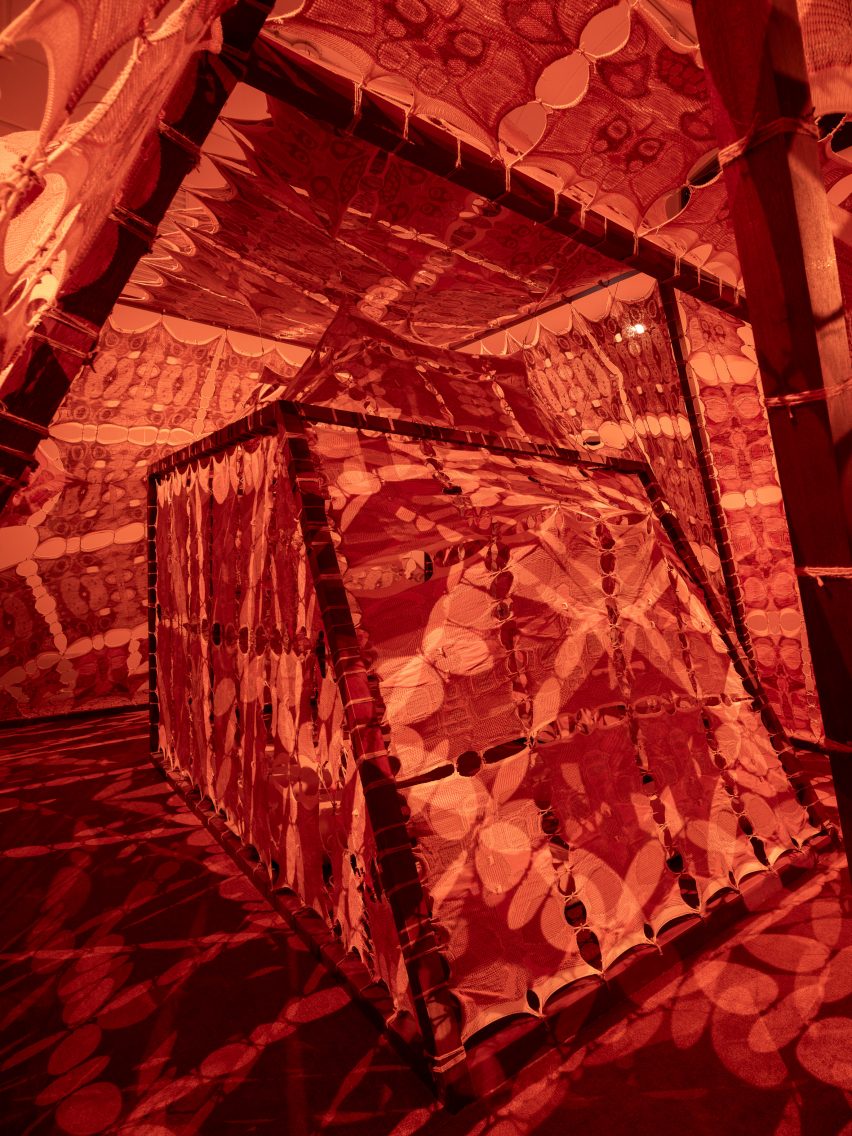
Jabal: 9 Ash Cleansing Temple by Yussef Agbo-Ola
Occupying one of the school's classrooms is a fabric, tent-like temple that is intended as a space of sanctuary.
Designed by architect Yussef Agbo-Ola of London environmental design practice Olaniyi Studio, the structure is made from jute, hemp and cotton yarns knitted into a fabric. Including these fabrics in the temple aims to reflect the impact of climate change on Sharjah's biodiversity.
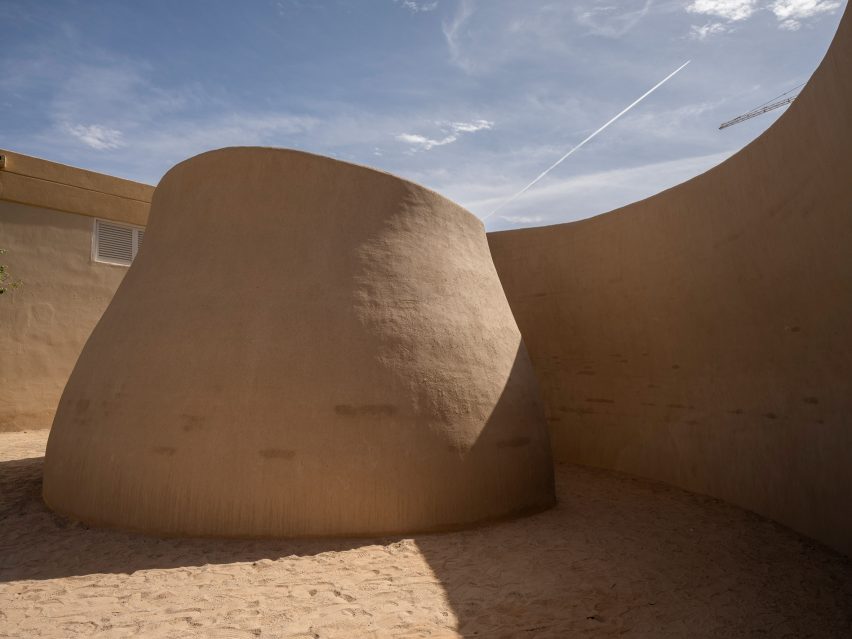
Earth to Earth by Sumaya Dabbagh
Designed "to draw attention to the collective memory of earth", this curved pavilion by architect Sumaya Dabbagh sits alongside the Sharjah Architecture Triennial's school venue and is made from mud bricks baked in the sun.
"The region is quite young, but in recent memory there was connection with the land and in a short time this was lost," explained Dabbagh.
"The pavilion emphasises the relationship we have with the land – and we need to reconnect to that," she continued.
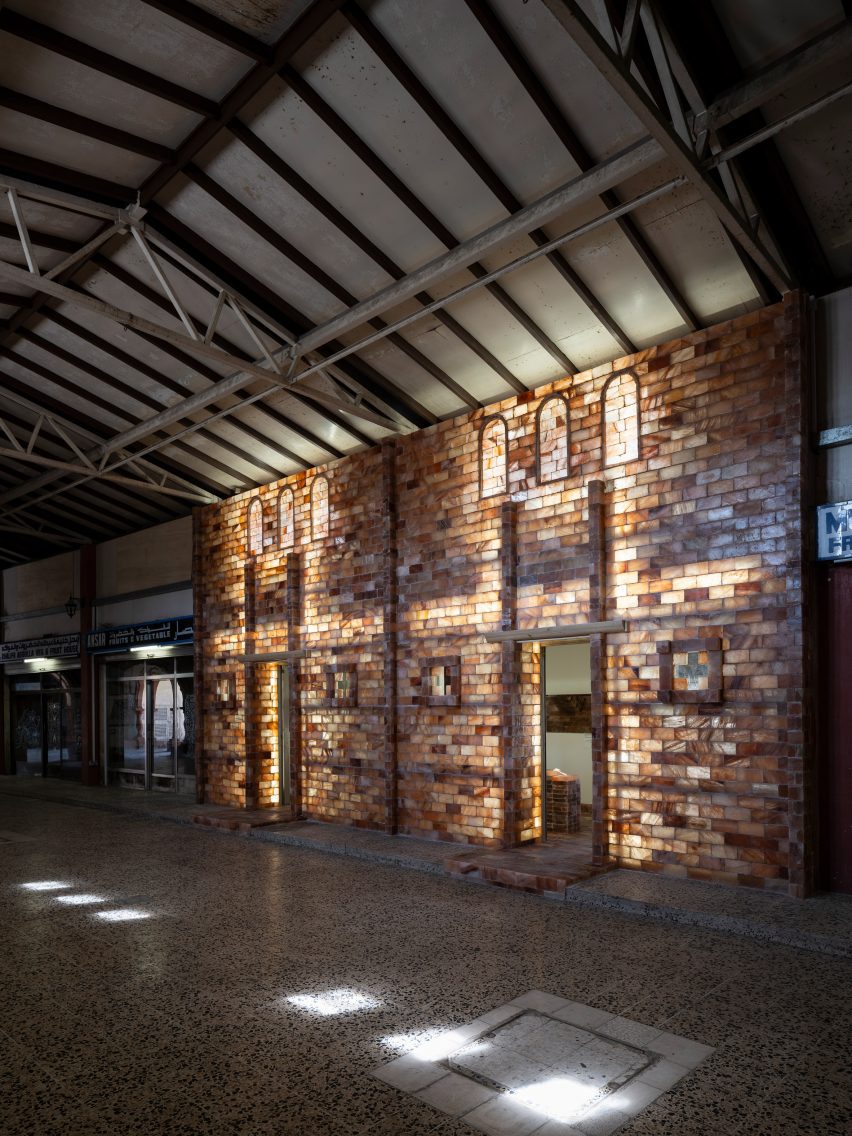
The Museum of Artifice by Miriam Hillawi Abraham
Multi-disciplinary designer Miriam Hillawi Abraham has created a church-like facade from Himalayan salt blocks and set it within a former vegetable market, which is one of the main venues for the Sharjah Architecture Triennial.
Positioned in front of one of the former shops, the facade is designed to resemble the rock-hewn Lalibela churches in northern Ethiopia.
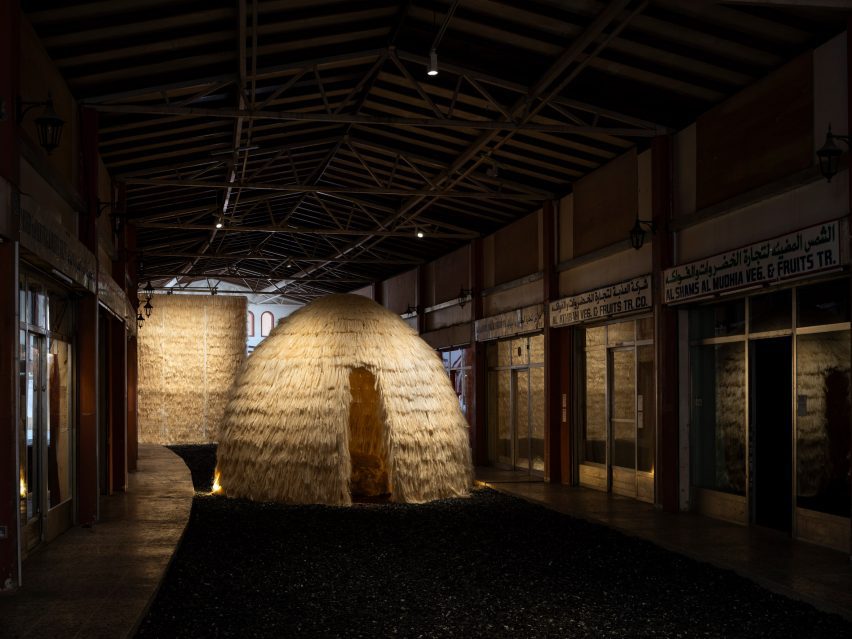
Óré ì Sé Àgbon by Bubu Ogisi
In one of the former market's halls, Lagos-based fibre artist and fashion designer Bubu Ogisi has contributed an immersive installation that aims to make visitors consider spirituality.
The space is enclosed by fringed textile panels and video installations, while a fibre-covered enclosure at the centre is designed as a space for a guardian spirit. A cinnamon floor releases the smell of the fragrant bark as visitors walk through.
"Walking through the landscape, the viewer's body becomes a spiritual landscape – an energy field, designed, constantly reworked and reactivated," said the designer.
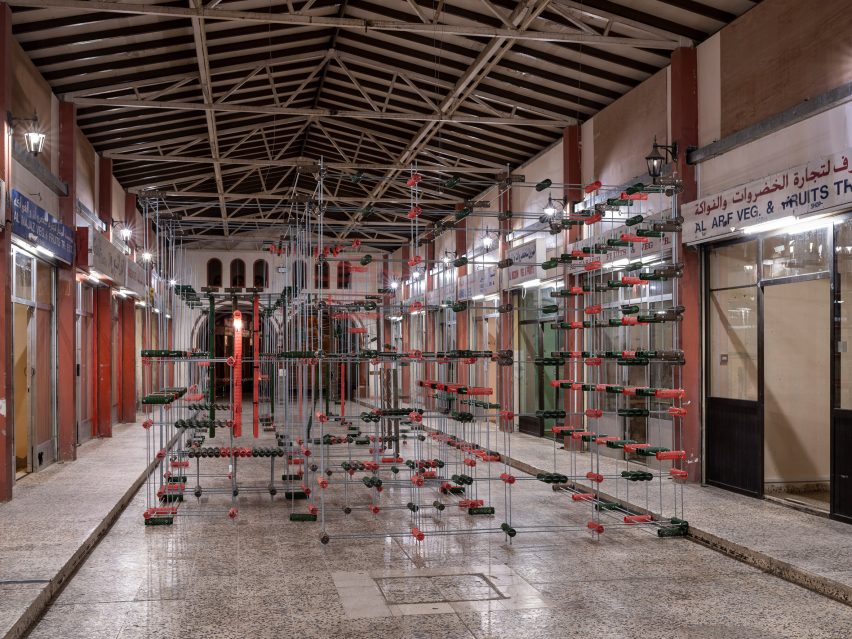
The Ship of Theseus by Tom Egoumenides
French designer Tom Egoumenides aimed to challenge traditional design practices by creating an installation from discarded thread spools and threaded rods.
Named The Ship of Theseus, the installation in the market's main hall forms a maze-like structure with tables and seats that visitors can walk through.
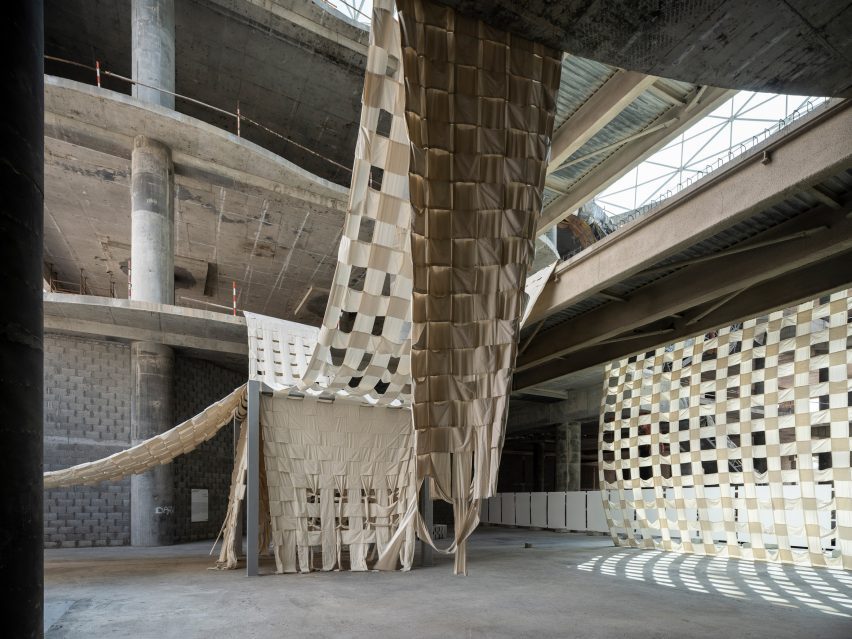
Super Limbo by Limbo Accra
In the abandoned Sharjah Mall, which is one of the UAE's largest unfinished buildings, Ghanaian studio Limbo Accra has created architectural forms from standard untreated calico cotton.
Informed by the fabric that surrounds many buildings under construction, the installations aim to draw attention to the mall's state of limbo.
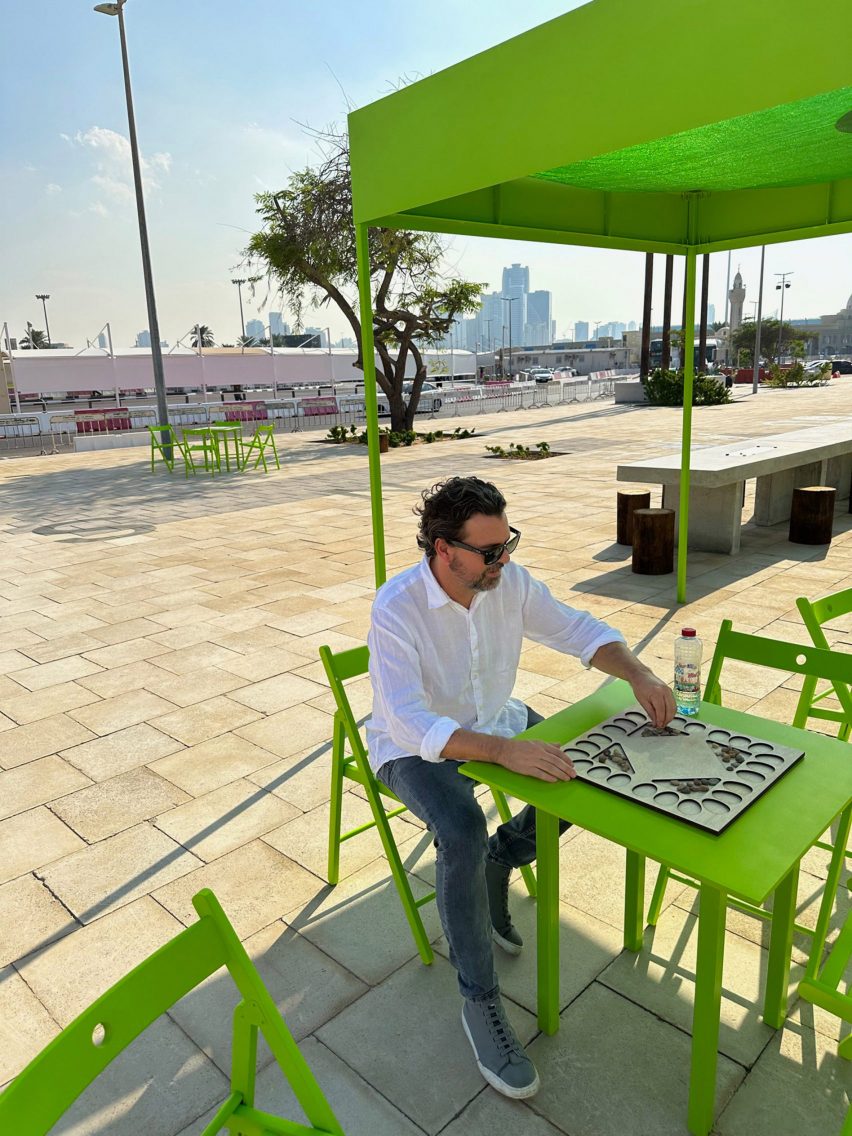
Play You Are in Sharjah by 51-1 Arquitectos
Alongside the curved former market, Peruvian studio 51-1 Arquitectos has installed four giant flags that spell the word "play" along with tables for playing board games.
Each of the tables is sheltered by a moveable canopy to encourage people to spend time in the area, which was a bustling space before the market closed.
"We wanted to activate this entirely dead space," studio co-founder Manuel de Rivero told Dezeen. "We tried to laminate the space that, for many, is the entrance to Sharjah."
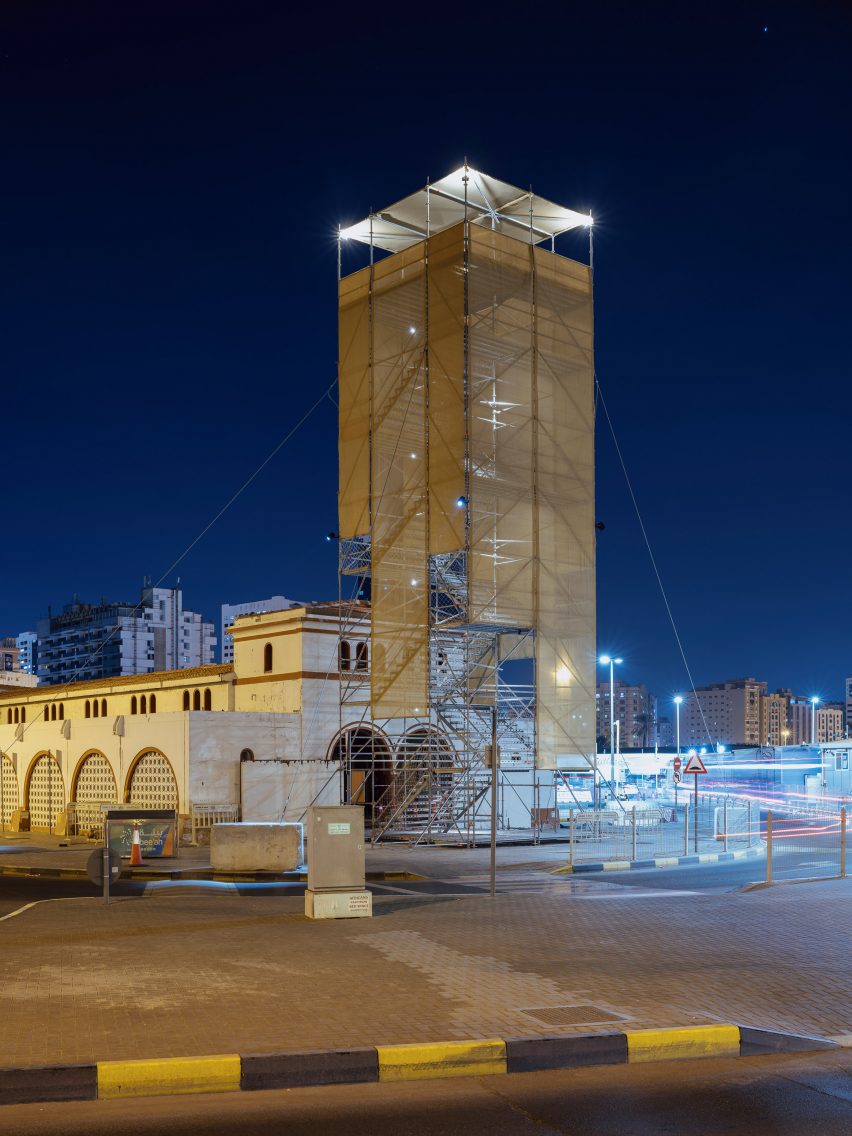
Time Transitions by Rúina Architecture
Also located outside the market is a fabric-covered viewing tower designed by Brazilian studio Rúina Architecture. It aims to restore the view between the building and the waterfront, which was lost when a new market was built on reclaimed land.
Informed by local cooling towers used to naturally ventilate buildings, it is also a comment on the fact that the passively cooled market was replaced with an air-conditioned one.
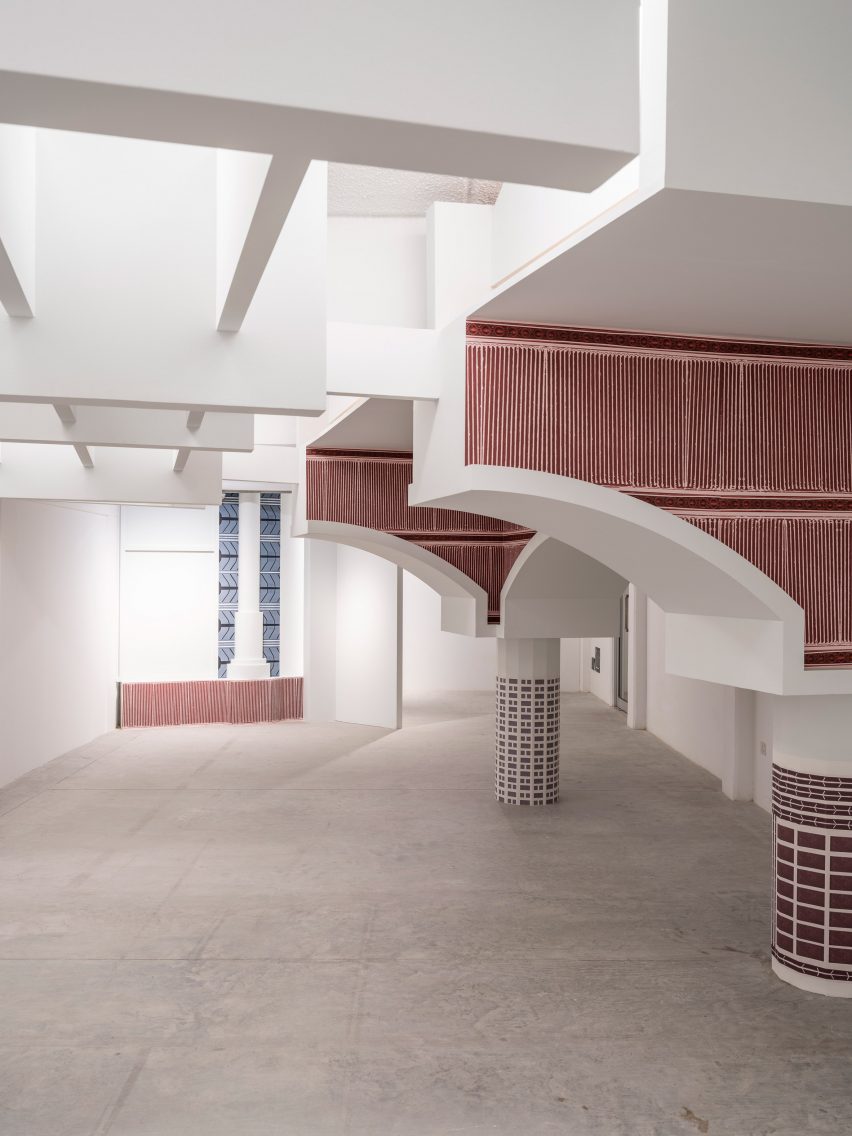
Tashkent Appropriating Modernism by Wael Al-Awar
Architect Wael Al-Awar created a series of half-scale, sectional models of a trio of Tashkent's modernist buildings, which are squeezed into one of the school's classrooms.
The exhibition draws attention to the extensive remodelling of each of these buildings and questions plans to restore them to their original states.
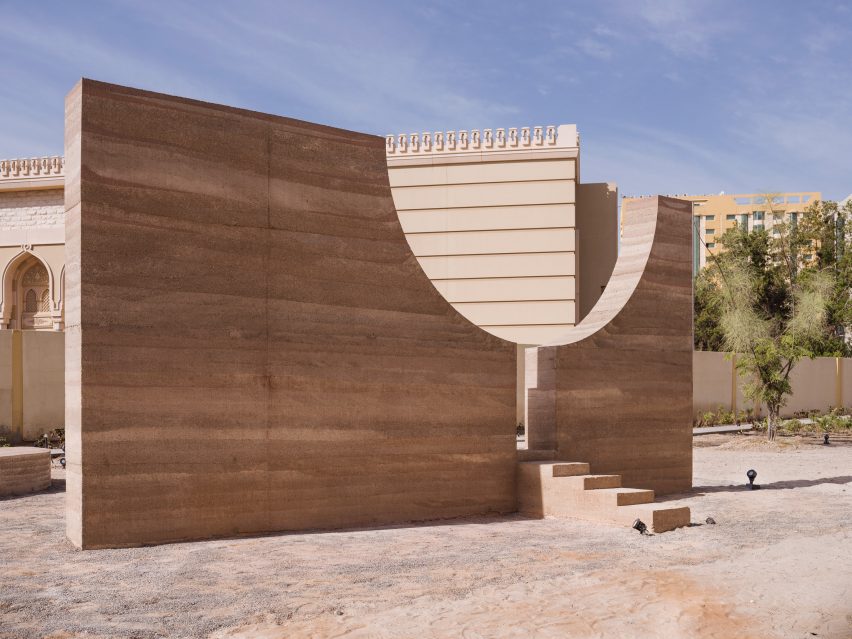
Eta'Dan by Hive Earth
Also on the ground of the school, Ghanaian studio Hive Earth has contributed a rammed earth pavilion named Eta'Dan, which translates as mud wall in Fante.
The pavilion, which is designed to be sat or climbed on, is constructed from earth found sourced from across the UAE to give it a coloured stratification.
The photography is by Danko Stjepanovic unless otherwise stated.
Sharjah Architecture Triennial 2023 takes place from 11 November 2023 to 10 March 2024 at various locations across Sharjah. See Dezeen Events Guide for an up-to-date list of architecture and design events taking place around the world.